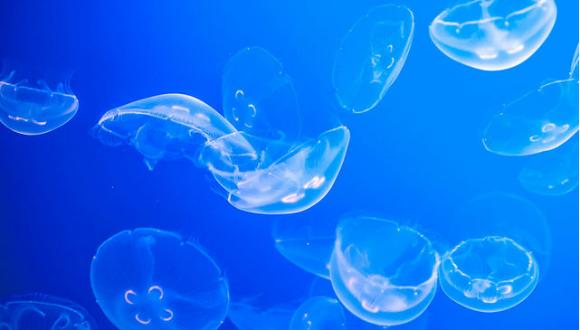Turning the Tide on "Jellyfish Terrorism"
A United Nations report released in May called on scientists worldwide to join a war on jellyfish. Jellyfish have disrupted the marine ecosystem and are seen by scientists as "terrorists" in the food chain. For example, a recent report describes how a bloom of jellyfish, spanning four square miles, devoured 100,000 salmon at a fish farm in Northern Ireland, causing damages of $1.5 million. And even though 450,000 tons of jellyfish are fished every year for the East Asian food industry, jellyfish consumption is far from effective in reducing or controlling the rapidly reproducing creatures’ population growth.
According to a recent article in Haaretz, Tel Aviv University has been successful in turning jellyfish to more useful purposes. Prof. Shahar Richter of TAU's Department of Materials Science and Engineering and Center for Nano Science and Nanotechnology, Prof. Michael Gozin of TAU's School of Chemistry, and TAU students Liron Reshef, Gad Kedem, Roman Nudelman, and Dr. Tamila Giolahamdov have devised a way of turning jellyfish into a resource that could be used in various industries, providing an incentive to fish the creatures en masse and reduce their number.
Richter's method, now being registered as a patent, could turn jellyfish into an attractive resource for paramedical, hygiene, and perishable-product industries. They could be used for environmentally safe medical treatments, advanced bandages, and other plastic products.
The jellyfish's triple threat
"Jellyfish cause damage in three major areas," Richter told Haaretz. "First, they clog up and paralyze atomic or electric power stations and desalination plants. In fact, they spell disaster for any facility that uses sea water. This happens in many places, including Korea, Japan, Sweden and India."
Second, jellyfish have had a dramatic impact on the world fishing industry, snagging and blocking fishing nets with their massive size. The third industry to come under jellyfish attack is tourism. While jellyfish on Israeli shores cause painful burning at worst, the species off Australia's shores are deadly, requiring the closure of beaches for extended periods.
A jellyfish consists of an umbrella-shaped bell and trailing tentacles; 90 percent of it is water. In studies, the researchers first cut off the tentacles and then ground the jellyfish to eliminate the water. The remaining substance consisted of two proteins useful in the biotechnological industries — collagen (found in human skin) and mucin (found in mucous tissues). The team developed methods to turn this jellyfish "essence" into composite materials, adding nanoparticles with useful properties, like electrical conductivity, anti-bacterial materials, medicines, and glowing substances.
"The result is a composite biological material. Our innovation is proving that the material is perishable, so that if we bury it in the ground it will decompose, not pollute or cause environmental damage," Prof. Richter told Haaretz. The team is currently examining industrial and commercial applications for this material.
As originally reported by AFTAU.






